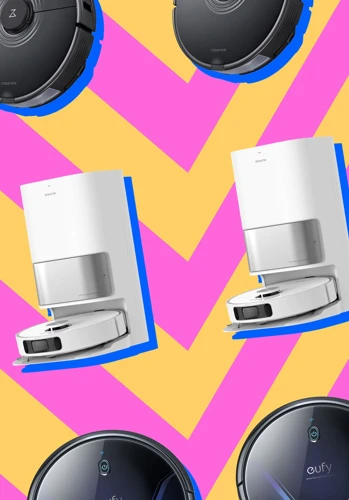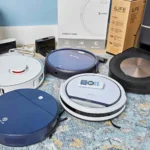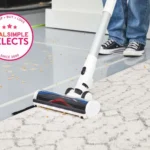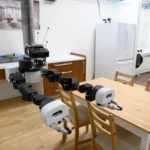Introduction
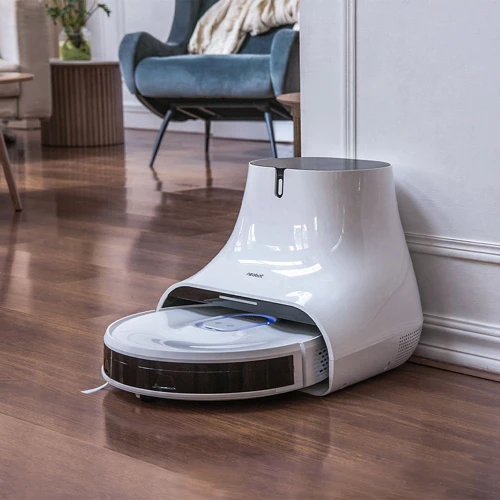
As we continue to prioritize the health of our planet, one area where we can make a significant impact is in our cleaning practices. Switching to eco-friendly cleaning solutions is a start, but have you considered the impact of your cleaning equipment? Smart vacuum cleaners are rising in popularity due to their convenience, but did you know that they can also be environmentally friendly? By incorporating certain features, you can ensure that your smart vacuum cleaner isn’t just cleaning your home, but also helping to clean up the planet. Let’s explore some of the key features to look for in an eco-friendly smart vacuum cleaner.
Explanation of smart vacuum cleaners
To put it simply, smart vacuum cleaners are high-tech cleaning devices that provide automated cleaning solutions. They are equipped with sensors that allow them to navigate through a room and detect obstacles, dirt, and dust. These sensors also allow them to avoid collisions and prevent damage to household items.
Smart vacuums also come with advanced features that make them stand out from traditional vacuums. For example, energy efficiency is a key factor in the design of smart vacuums. They use energy-saving technology and low power consumption motors that reduce their impact on the environment. In fact, some models are designed to operate exclusively on solar power or rechargeable batteries, which significantly improves their sustainability.
Another feature that sets smart vacuums apart is their use of HEPA filters. These filters are designed to remove pollutants and allergens from the air, which makes them ideal for people with allergies or respiratory problems. They also have a longer lifespan than traditional filters and because they are reusable, they generate less waste.
To further promote sustainability, manufacturers of smart vacuums ensure that they are constructed from recyclable materials. These materials reduce waste production and are better for the environment than traditional plastics and metals. In addition to this, some manufacturers even use recycled materials in their construction.
Smart vacuums are also equipped with smart navigation features. These devices rely on efficient cleaning patterns that reduce energy usage and prevent the unnecessary cleaning of already clean areas. By using sensors and algorithms, they accurately detect areas that require more thorough cleaning.
Reducing noise pollution is also an important aspect of smart vacuums, which is why they come with noise reduction features. They operate quietly, which makes them ideal for use in households with small children or pets. This not only benefits the people around them, but also minimizes the environmental impact from noise pollution.
Another feature that sets smart vacuums apart is their multi-purpose cleaning capabilities. These devices are capable of cleaning multiple surfaces with one device, thus reducing the need for additional cleaning tools. This feature is particularly beneficial for households with various flooring types.
Smart vacuums are also designed to be adaptive. They adjust their cleaning based on room conditions, including the amount of dirt and dust, floor type, and other environmental factors. This reduces unnecessary use of energy and materials, and helps to improve their overall efficiency.
To allow for user convenience, smart vacuums often come with a mobile application that integrates with the device. This allows for remote control and scheduling of cleaning sessions, reducing energy use and preventing excess cleaning. With these features, users can optimize vacuuming schedules and reduce energy consumption.
One of the key features of smart vacuums is their battery life. They typically have high-capacity batteries that reduce charging and energy consumption. This makes them more sustainable and environment-friendly, particularly when compared to traditional vacuums.
Smart vacuums also eliminate the need for harsh chemicals, which makes them environmentally friendly. They use eco-friendly cleaners that don’t require harsh chemicals, thus eliminating the need to buy, store, and dispose of multiple cleaning agents. This is not only a more sustainable option, but also a safer one for households with young children and pets.
Finally, manufacturers ensure that smart vacuums are designed with product durability in mind. They have longer lifespans and require fewer replacements, which reduces waste and material consumption. This is not only beneficial for the environment, but also cost-effective for the user.
Smart vacuum cleaners are designed with features that prioritize sustainability and energy efficiency. Their advanced features, including smart navigation, noise reduction, multi-purpose cleaning, adaptive cleaning, battery life, and no use of chemicals, make them better for the environment and more sustainable than traditional vacuums.
Energy Efficiency
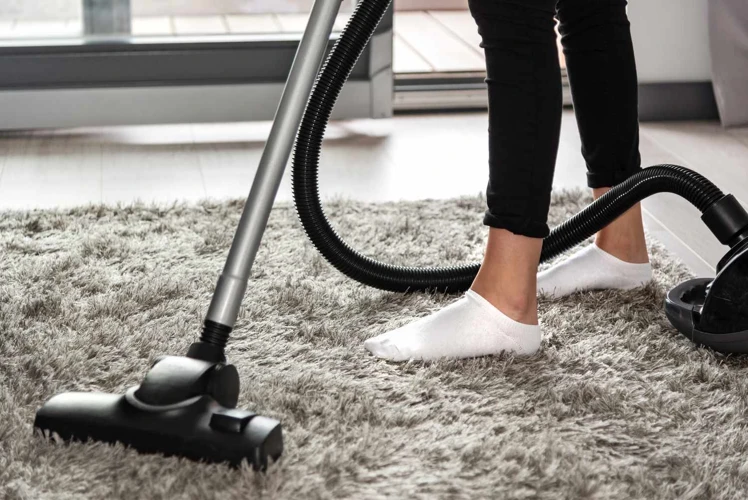
In today’s world, where climate change is becoming a major concern, it’s essential to choose household appliances wisely. Smart vacuum cleaners are becoming increasingly popular due to the convenience they provide in cleaning our living spaces. However, they also have an impact on our environment and can consume a significant amount of energy. That’s why it’s essential to look for energy-efficient features in a smart vacuum. Not only does this help reduce our carbon footprint, but it can also save money in the long run. Let’s explore the different energy-saving technologies and features that can make a smart vacuum more eco-friendly. To learn more about reducing energy usage while using smart vacuums, check out our article on tips to reduce energy consumption while using smart vacuums.
Use of energy-saving technology
One of the most important eco-friendly features to look for in a smart vacuum cleaner is the use of energy-saving technology. This not only helps reduce energy consumption but can also lead to lower electric bills over time. Smart vacuums designed with energy efficiency in mind are making strides in meeting the ever-growing demands of consumers who are looking to make a positive impact on the environment.
Manufacturers are now equipping smart vacuums with energy-efficient motors, which use far less energy than their traditional counterparts. These energy-efficient motors consume a fraction of the electricity needed to power standard vacuum motors. This feature alone can save you hundreds of dollars over the life of your vacuum. Additionally, smart vacuums equipped with these motors have a longer lifespan and require less maintenance than conventional vacuums.
Another energy-saving feature to look for when choosing an eco-friendly smart vacuum is its Energy Star rating. The Energy Star rating system is a government-backed program designed to promote energy efficient technology. It helps consumers make informed choices about the products they buy and their impact on the environment. Smart vacuums with an Energy Star rating have been tested and found to meet strict energy efficiency guidelines. The Energy Star rating will help you choose a vacuum that uses less electricity and save you money in the process.
Aside from energy-efficient motors and the Energy Star rating, there are other energy-saving technologies that smart vacuums are incorporating. For instance, some smart vacuums adjust their suction power based on the amount of dirt they sense. This leads to lower energy consumption and less noise, which in turn puts less stress on the motor. Many smart vacuums come with sensors that detect when an area has been cleaned and will stop moving to conserve energy.
Investing in an energy-smart vacuum is a win-win for both you and the environment. These vacuums not only save you money on electric bills but also reduce your carbon footprint. The fewer resources that are used in the cleaning process, the better the planet will be. And, as technology advances, more and more features will be added to make smart vacuums even more energy efficient.
To further benefit from an energy-saving smart vacuum, it’s important to maintain it properly. Keeping the vacuum clean and well-maintained will reduce its energy consumption and ensure that it continues to function efficiently. It’s also recommended to purchase a vacuum with a higher battery capacity to avoid frequent charging, which leads to less energy consumption and a longer lifespan for the vacuum.
When looking to purchase an eco-friendly smart vacuum, the use of energy-saving technology should be a key consideration. With the use of energy-efficient motors, an Energy Star rating, and other energy-saving features, you can reduce your carbon footprint and electricity bills while still maintaining a clean home. By choosing an energy-efficient model, you will be doing your part in creating a cleaner and better planet for future generations.
Low power consumption
When looking for eco-friendly features in a smart vacuum cleaner, it’s important to consider low power consumption. This feature not only reduces the amount of energy used, but also helps keep electricity bills low.
A smart vacuum with low power consumption also has a positive impact on the environment by reducing your carbon footprint. According to a study by the National Institute of Standards and Technology, vacuum cleaners are responsible for approximately one percent of all energy consumed by households in the United States. By choosing a smart vacuum with low power consumption, you can help reduce this percentage and contribute to a cleaner environment.
Many smart vacuums have energy-efficient motors that use less energy than traditional vacuum cleaners. These motors are designed to provide the same suction power while using less energy, resulting in a more energy-smart vacuum. You can learn more about energy-efficient motors in smart vacuums here.
Some smart vacuums also have an Energy Star rating, a certification awarded to energy-saving products that meet strict energy efficiency guidelines. Choosing a smart vacuum with an Energy Star rating can further increase energy savings and reduce environmental impact. Read more about Energy Star rated smart vacuums and their benefits.
To help reduce your carbon footprint while vacuuming, look for a smart vacuum with an energy-saving mode or a power-saving option. These features ensure that the vacuum uses less energy when it’s not needed, such as when it’s stationary or when the battery is fully charged.
Choosing a smart vacuum with low power consumption can have great benefits for both your wallet and the environment. It’s a win-win situation that will allow you to keep your home clean while reducing energy usage and costs. Learn more about the benefits of energy-saving smart vacuums today.
| Benefits of Low Power Consumption |
|---|
| Reduces energy consumption |
| Lowers electricity bills |
| Decreases carbon footprint |
| Energy-efficient motors provide the same suction power with less energy |
| Energy Star rated smart vacuums meet strict energy efficiency guidelines |
Energy Star rating system
One of the most reliable guides for energy-efficient products is the Energy Star rating system. This rating system is used to indicate the energy efficiency of appliances, including vacuum cleaners. The Energy Star rating is a program developed by the U.S. Environmental Protection Agency (EPA) and the Department of Energy. It is designed to help consumers identify energy-efficient products that can help them save money on energy bills and reduce their impact on the environment.
The Energy Star rating system provides a simple and convenient way for consumers to identify vacuum cleaners that are energy efficient. Vacuum cleaners with an Energy Star rating are typically more expensive than those without, but they are well worth the investment in the long run. The table below shows the different criteria for an Energy Star rated vacuum cleaner:
| Criteria | Upright Vacuums | Cylinder Vacuums |
|---|---|---|
| Power Usage | Less than 1000 watts | Less than 900 watts |
| Dust Re-emission | Less than 1% | Less than 1% |
| Sound Power Level | Less than or equal to 70 dB | Less than or equal to 75 dB |
As shown, a vacuum cleaner must meet specific criteria for power usage, dust re-emission, and sound power levels to receive an Energy Star rating. The power usage of an Energy Star rated upright vacuum cleaner must be less than 1000 watts, while cylinder vacuums must consume less than 900 watts. Both types of vacuums must have dust re-emissions of less than 1%, and sound power levels of less than or equal to 70 dB (upright vacuums) or 75 dB (cylinder vacuums).
By investing in a smart vacuum cleaner with an Energy Star rating, consumers can save energy, money, and help protect the environment. An energy smart vacuum with Energy Star rating can help to reduce energy consumption and ultimately lower your energy bills.
HEPA Filters
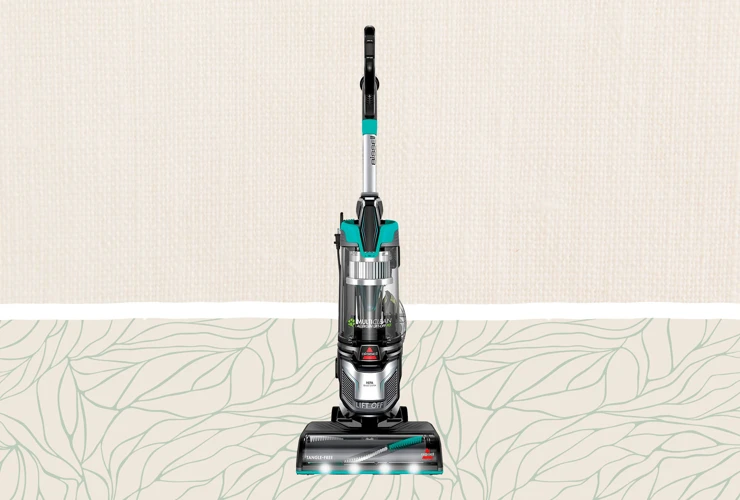
When considering eco-friendly features in a smart vacuum cleaner, the type of filter it uses is an important factor to take into account. A high-efficiency particulate air (HEPA) filter can play a vital role in promoting a greener and healthier lifestyle. These filters are designed to capture microscopic particles that cause allergies and respiratory problems, such as pollen, dust mites, and pet dander. In this section, we will explore the benefits of HEPA filters, how they work, and their impact on the environment.
Removes pollutants and allergens
HEPA filters are one of the key eco-friendly features to look for when purchasing a smart vacuum cleaner. Not only do they improve indoor air quality, but they also have a lower environmental impact than traditional filters. Here are some reasons to consider choosing a smart vacuum cleaner with a HEPA filter:
- Removes harmful pollutants: HEPA filters are designed to capture small particles, such as pet dander, pollen, and mold spores, that can trigger allergies and asthma. This is especially important for households with young children or individuals with health conditions.
- Improves indoor air quality: Cleaner air means a healthier home environment. HEPA filters can improve the overall air quality, reducing the amount of dust and other irritants in the air.
- Longer lifespan: HEPA filters are built to last, usually lasting for several years before needing replacement. This reduces the amount of waste generated by traditional filters that need frequent replacement.
- Reusable: Many HEPA filters are washable and reusable, which means you can clean and maintain them easily. This reduces the need to constantly replace filters.
- Better for the environment: Since HEPA filters last longer and can be recycled, they are a more sustainable choice than traditional filters that produce a considerable amount of waste.
Choosing a smart vacuum cleaner with a HEPA filter is a smart choice for improving indoor air quality, reducing waste, and being eco-conscious.
Longer lifespan and reusable
It’s important to consider the lifespan of your smart vacuum cleaner when looking for an eco-friendly option. A longer lifespan means less waste and fewer replacements, which ultimately has a positive impact on the environment. Additionally, having a vacuum cleaner with reusable components can also reduce waste and emissions.
Here are some key components to look for in a smart vacuum cleaner that have longer lifespans and are reusable:
| HEPA Filters | HEPA filters have a longer lifespan than traditional filters and can be cleaned and reused multiple times. They also effectively remove pollutants and allergens from the air, making them a great feature to have in an eco-friendly vacuum cleaner. |
| Battery Life | High-capacity batteries have a longer lifespan and require fewer replacements. This means less waste and fewer emissions from the production and disposal of batteries. |
| Recyclable Materials | Choosing a smart vacuum cleaner made from recyclable materials not only reduces waste but also supports a circular economy. Additionally, some companies offer take-back programs for their products to ensure they are properly recycled at the end of their lifespan. |
| Product Durability | A durable vacuum cleaner with high-quality materials can have a longer lifespan and require fewer replacements. It’s important to invest in a product that can withstand regular use and last for years to come. |
By choosing a smart vacuum cleaner with components that have a longer lifespan and are reusable, you can reduce waste and emissions while also enjoying the benefits of a clean home.
Better for the environment than traditional filters
HEPA filters are not only effective at removing pollutants and allergens from the air, but they are also better for the environment than traditional filters. Here are some reasons why:
- Reduced waste: HEPA filters are made to last longer than traditional filters, which means that they do not have to be replaced as often. This reduces the amount of waste that is produced, and helps to conserve resources.
- Less energy consumption: By reducing the need for frequent filter replacements, HEPA filters also help to reduce the energy that is required to produce and transport these filters. This contributes to a more sustainable and eco-friendly approach to product design and manufacturing.
- Better air quality: HEPA filters are designed to remove smaller particles from the air, such as allergens and pollutants. By doing so, they help to improve indoor air quality, which can have important health benefits.
- Improved sustainability: HEPA filters are often made from materials that are more sustainable and environmentally friendly than traditional filters. For example, some HEPA filters are made using recycled materials, which helps to conserve resources and reduce waste.
Choosing a smart vacuum cleaner with a HEPA filter is a smart choice for anyone who wants to prioritize sustainability and environmental responsibility in their purchasing decisions. HEPA filters not only improve air quality and reduce allergens, but they also contribute to a more eco-friendly and sustainable future.
Recyclable Materials
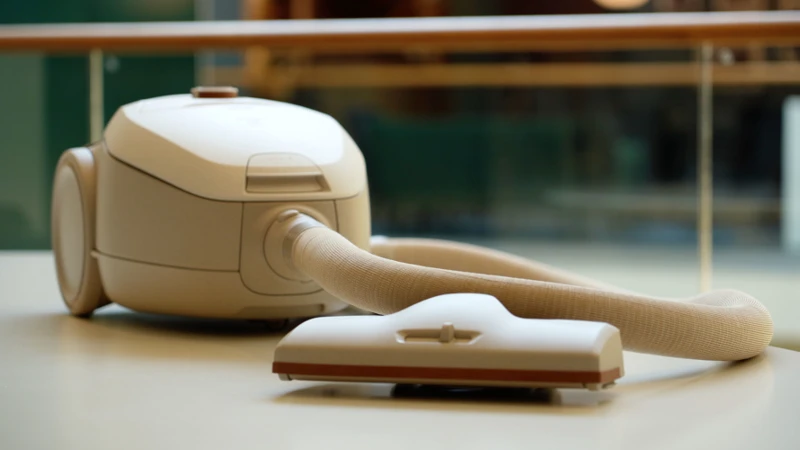
As consumers become increasingly aware of the environmental impact of their purchases, manufacturers are taking note and creating products that prioritize sustainability. This is especially true for smart vacuum cleaners, which have a significant impact on a household’s energy consumption and waste production. By incorporating recyclable materials into their construction, smart vacuums not only reduce their carbon footprint but also offer an attractive option for those looking to reduce waste in their homes. Let’s take a closer look at how this eco-friendly feature benefits the environment and the consumer.
Use of recycled and eco-friendly materials in construction
Smart vacuum cleaners with eco-friendly features are ideal for those who are environmentally conscious and looking to make more sustainable choices in their everyday life. One important feature to look for is the use of recycled and eco-friendly materials in construction. Here are some more detailed points on this topic:
- Recycled materials: Using recycled materials in the construction of smart vacuum cleaners helps to reduce the amount of waste that goes into landfills. These materials include recycled plastic, metal, and other materials that have been salvaged from other sources.
- Eco-friendly materials: In addition to recycled materials, some vacuum cleaners may use eco-friendly materials such as bamboo or other sustainable materials in their construction. These materials are renewable and have a lower environmental impact than traditional materials.
- Reduced carbon footprint: Using recycled and eco-friendly materials in construction also means that less energy is required to produce the vacuum cleaner. This reduces the carbon footprint of the manufacturing process and helps to minimize the impact on the environment.
- Better air quality: Using eco-friendly materials may also help to improve indoor air quality. Traditional materials can release harmful chemicals and toxins into the air, while eco-friendly materials are free from these harmful substances.
- Longer lifespan: Another benefit of using recycled and eco-friendly materials is that they tend to be more durable and longer-lasting than traditional materials. This means that smart vacuum cleaners made with these materials may have a longer lifespan, reducing the need for replacement and contributing to a more sustainable future.
Choosing a smart vacuum cleaner that uses recycled and eco-friendly materials is a simple yet effective way to reduce your environmental impact while still enjoying the benefits of a high-quality cleaning device.
Minimal waste production
When looking for an eco-friendly smart vacuum cleaner, it’s important to consider both the materials used in construction and the amount of waste produced during and after use. Choosing a vacuum that prioritizes minimal waste production can help reduce your household’s impact on the environment. Let’s take a closer look at some of the ways that smart vacuums can minimize waste:
| Feature | Description |
|---|---|
| Bagless Design | Smart vacuums with bagless designs reduce the need for disposable bags that create excess waste. Instead, these vacuums typically use reusable canisters that can be emptied and cleaned as needed. |
| Reusable Filters | Many eco-friendly smart vacuums also use reusable filters, such as HEPA filters, that can be removed, washed, and reused multiple times. This helps reduce the need for constantly purchasing and disposing of disposable filters. |
| Low Maintenance | Some smart vacuums require less maintenance than traditional models, reducing the need for replacement parts and repairs. Choosing a vacuum with a longer lifespan can also help reduce waste in the long run. |
| Recycled Materials | Some smart vacuum cleaners are constructed with recycled and eco-friendly materials, which can help reduce waste and promote sustainable manufacturing practices. Additionally, some manufacturers have implemented closed-loop systems in their production processes, which means waste is minimized by recycling materials back into the manufacturing process wherever possible. |
By prioritizing minimal waste production, you can reduce your environmental impact while still keeping your home clean and tidy. Consider these features when choosing your next smart vacuum cleaner and help protect the planet for future generations.
Smart Navigation
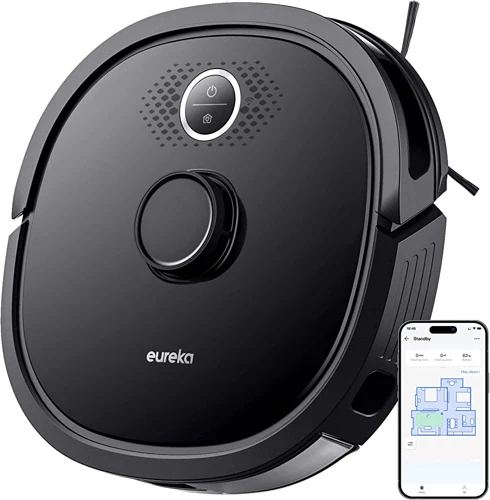
As technology continues to advance, so does the intelligence of our household appliances. With the rise of smart vacuum cleaners, we now have the ability to efficiently clean our homes while minimizing energy usage and reducing our carbon footprint. One of the most notable features of these smart vacuums is their adaptive navigation capabilities, which allow them to clean in a more efficient manner than traditional vacuums. Let’s delve into this feature and see how it can benefit both our homes and the environment.
Efficient cleaning patterns reduce energy usage
When it comes to smart vacuum cleaners, efficient cleaning patterns can make a big difference in terms of energy usage. By reducing overlap and minimizing unnecessary movements, these devices can clean your home in the most efficient way possible.
One way this is achieved is through the use of advanced sensors that allow the vacuum cleaner to navigate your home with precision. These sensors help it to avoid obstacles and recognize when a room has been fully cleaned, preventing repeated cleaning of the same area. Many smart vacuum cleaners also come equipped with mapping capabilities that allow them to create a floor plan of your home, further optimizing the cleaning process.
To give you an idea of just how much energy can be saved using efficient cleaning patterns, take a look at the table below. This table compares the energy usage of a traditional vacuum cleaner with a smart vacuum cleaner that utilizes advanced sensors and mapping technology.
| Traditional Vacuum Cleaner | Smart Vacuum Cleaner | |
|---|---|---|
| Time spent cleaning a 2,000 square foot home | 2 hours | 1.5 hours |
| Energy consumption per hour | 1,500 watts | 1,000 watts |
| Total energy consumed | 3,000 watt-hours | 1,500 watt-hours |
As you can see, the smart vacuum cleaner is not only faster but also uses less energy to get the job done. This means you can enjoy a clean home without having to worry about the environmental impact of your cleaning routine.
In addition to being energy-efficient, smart vacuum cleaners also offer a range of other eco-friendly features, such as HEPA filters, the use of recyclable materials, and the elimination of harsh chemicals. By prioritizing these features when choosing a smart vacuum cleaner, you can help protect both your home and the environment.
Prevents unnecessary cleaning of already clean areas
Smart navigation is a key feature of eco-friendly smart vacuum cleaners because it prevents unnecessary cleaning of already clean areas. With traditional vacuum cleaners, it can be difficult to identify which areas have already been cleaned, often leading to over-cleaning and the waste of time and energy. However, advanced sensors and mapping technology in smart vacuum cleaners allow them to recognize which areas have been cleaned and which ones still need to be addressed.
Here are some ways the smart navigation feature in eco-friendly smart vacuum cleaners prevents unnecessary cleaning:
- The device tracks and maps the cleaning path, making it easy to identify where it has already cleaned
- The sensors detect objects that have already been cleaned, so the vacuum won’t run over them again
- The robot can distinguish between clean and dirty areas, saving energy by focusing on the latter
- The device can be programmed to clean only specific areas, such as high-traffic zones, further reducing unnecessary cleaning
This feature is both eco-friendly and practical for consumers. By preventing the device from unnecessarily cleaning already clean areas, it saves energy and battery life, ultimately reducing the environmental impact of the device. Additionally, it allows users to save time and focus the cleaning on the areas that need it most.
Noise Reduction
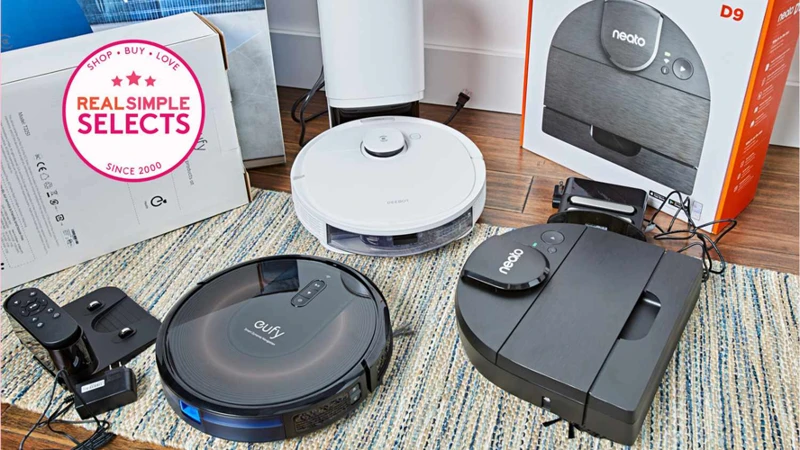
When it comes to household appliances, noise reduction ranks high on the list of important features for many people. A loud vacuum cleaner can be disruptive to the household, and can add unnecessary stress to both people and pets. Plus, loud appliances tend to use more energy, which is not great for the environment. Fortunately, many smart vacuum cleaners come equipped with noise reduction features that make them more appealing to both humans and the planet. Let’s explore some of these features below.
Quieter operation for less disturbance
One of the most important eco-friendly features to look for in a smart vacuum cleaner is a quieter operation. This not only reduces noise pollution but also ensures that the household members are not disturbed while the cleaning is in progress.
There are several factors that contribute to the quieter operation of a smart vacuum cleaner. These factors include:
- Noise-reducing technology: Many smart vacuum cleaners are designed with innovative noise reduction technology that minimizes the amount of noise produced. This technology can be in the form of soundproofing materials or acoustic design.
- Efficient motor: The motor of a smart vacuum cleaner is designed to operate with less noise as compared to traditional vacuum cleaners. This not only reduces noise but also saves energy.
- Improved suction: Smart vacuum cleaners are designed with improved suction technology that reduces the need for high-powered motors. This helps to reduce noise and save energy.
A quieter operation of a smart vacuum cleaner is not only better for the environment but also for the household. It reduces noise pollution and disturbance, ensuring a peaceful environment for everyone in the house.
By investing in a smart vacuum cleaner with a quieter operation, households can benefit from a more efficient, eco-friendly, and user-friendly cleaning experience.
Better for both the environment and the household
Smart vacuum cleaners with noise reduction features are not only better for the environment, but they can also create a healthier home environment. Let’s take a closer look at how these features benefit both the environment and the household.
| Benefit | Explanation |
|---|---|
| Environmental Benefit: Reduced Energy Usage | Smart vacuum cleaners with noise reduction features use less power, conserving energy and reducing the amount of carbon emissions produced by power plants. This results in a smaller carbon footprint for the household, which benefits the environment. |
| Health Benefit: Better Breathing | Noise reduction features in smart vacuum cleaners often incorporate HEPA filters, which remove common allergens and pollutants from the air. This makes the air in the household cleaner and safer to breathe, particularly for people with allergies or respiratory issues. |
| Environmental Benefit: Longer Product Life | Smart vacuum cleaners that produce less noise are often designed with advanced technology and made from durable materials, contributing to a longer product lifespan. This means fewer replacements and less waste for the environment. |
| Health Benefit: Reduced Stress | Reducing noise levels in the household can have a positive impact on overall stress levels. A quieter environment can promote relaxation and restful sleep, leading to better overall health. |
Smart vacuum cleaners with noise reduction features are an eco-friendly and healthy choice for the household. They offer reduced energy consumption, cleaner air, longer lifespan, and reduced stress levels, making them an excellent investment for both the environment and the household.
Multi-Purpose Cleaning
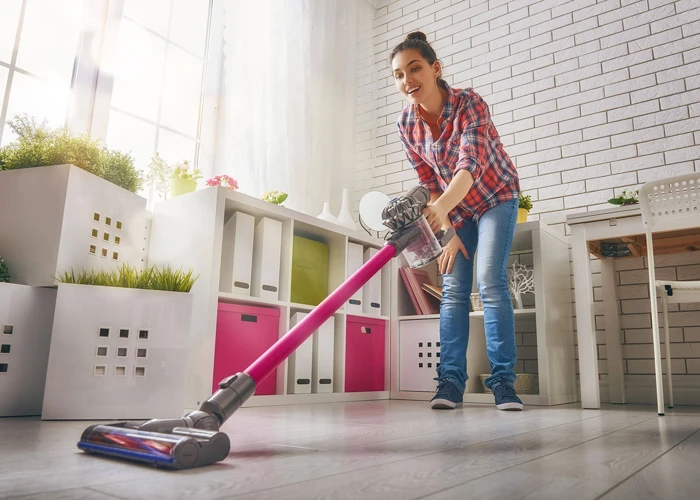
When it comes to cleaning our homes, we want a device that can handle different surfaces with ease. We want something that can clean carpets, hardwood floors, and even tiles. That’s where multi-purpose cleaning comes in. With this feature, a smart vacuum cleaner can handle multiple surfaces with just one device. It removes the need to have different cleaning tools and saves energy and materials. Let’s take a closer look at how this feature can benefit both you and the environment.
Capable of cleaning multiple surfaces with one device
One of the eco-friendly features to look for in a smart vacuum cleaner is its ability to clean multiple surfaces with one device. This can be achieved through the use of various attachments and adaptability to different floor types.
Here are some surfaces that a smart vacuum cleaner can clean:
- Hardwood floors
- Tile floors
- Carpet
- Area rugs
- Upholstery
- Curtains
The versatility of a smart vacuum cleaner eliminates the need for additional cleaning tools, which reduces waste and materials. Not only is this an environmentally friendly feature, but it is also extremely convenient for the user.
Some examples of attachments that a smart vacuum cleaner may have include:
- Dusting brush
- Crevice tool
- Upholstery tool
- Hard floor tool
- Pet hair tool
Having these attachments allows for efficient cleaning of a variety of surfaces without the need for multiple devices. This also saves energy and reduces the environmental impact associated with the manufacturing and disposal of additional cleaning tools.
A smart vacuum cleaner’s ability to clean multiple surfaces translates to its adaptability in different rooms and spaces. It can easily transition from cleaning carpets in the living room to hardwood floors in the kitchen without any additional effort from the user.
A smart vacuum cleaner’s ability to clean multiple surfaces with one device is an essential eco-friendly feature to look for. Its versatility and adaptability reduce the need for additional cleaning tools, which in turn reduces waste and materials.
Reducess the need for additional cleaning tools
When looking for an eco-friendly smart vacuum cleaner, it’s important to consider how it can reduce the need for additional cleaning tools. Not only does this save you time and money, it also minimizes the amount of waste produced.
One way smart vacuum cleaners achieve this is by incorporating multiple cleaning modes and attachments into one device. For example, the iRobot Roomba E5 has a special edge-sweeping brush that helps clean corners and edges without the need for a separate tool. Similarly, the Neato Botvac D7 has a combo brush that can handle both carpet and hard floors, eliminating the need to switch out attachments.
Another way smart vacuums reduce the need for additional cleaning tools is through their ability to handle multiple surfaces. For instance, the Shark Ion R85 can clean both carpets and hard floors with ease. With versatile cleaning capabilities, there is no need to purchase separate tools or machines for each surface type.
In the table below, we compare four different smart vacuum cleaners and their ability to reduce the need for additional cleaning tools:
| Smart Vacuum Cleaner | Cleaning Modes/Attachments | Surface Types |
|---|---|---|
| iRobot Roomba E5 | Edge-sweeping brush | Carpet/hard floors |
| Neato Botvac D7 | Combo brush | Carpet/hard floors |
| Shark Ion R85 | N/A | Carpet/hard floors |
| Eufy Robovac 11S | Boundary strips | Carpet/hard floors |
As shown, the Eufy Robovac 11S uses boundary strips to create no-go zones in the home, allowing for targeted cleaning without the need for additional tools. These features not only reduce the need for extra cleaning tools but also simplify your cleaning routine while remaining eco-friendly.
Adaptive Cleaning
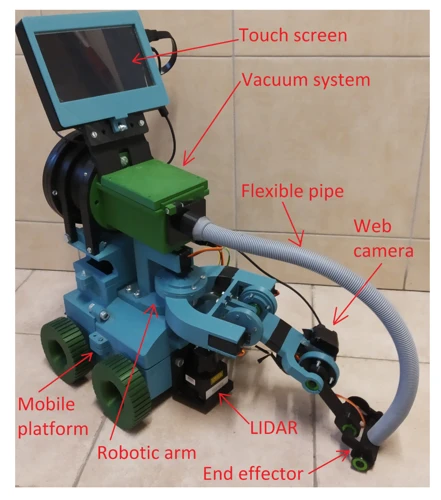
When it comes to keeping our homes clean, it can be easy to fall into the trap of relying on inefficient or wasteful cleaning methods. However, with advancements in smart vacuum technology, we now have the ability to clean our homes in a more adaptive and eco-friendly way. By utilizing sensors and advanced algorithms, modern smart vacuums can adjust their cleaning methods based on the conditions of each room, resulting in a more efficient and effective cleaning process. Let’s take a closer look at some of the innovative features that make adaptive cleaning such an attractive option for those looking to reduce their environmental impact.
Adjusts cleaning based on room conditions
Smart vacuum cleaners today are not only capable of autonomously cleaning homes, but also adjust their cleaning strategy based on room conditions. This feature greatly increases cleaning efficiency while minimizing wasted energy and resources.
How does it work?
The vacuum cleaner detects the size and layout of the room, as well as the amount and type of dirt and debris. It then uses this information to adjust the cleaning path and suction power to best clean the room. For example, if it detects more debris near the edges of the room, it may focus more on cleaning those areas.
Why is it important?
Adaptive cleaning helps to reduce unnecessary use of energy and materials by optimizing the cleaning process. It also ensures that the vacuum cleaner is not spending unnecessary time cleaning already clean areas. This not only reduces energy usage but also extends the battery life of the machine.
What are the benefits?
By adjusting cleaning based on room conditions, smart vacuum cleaners can ensure a thorough cleaning while minimizing waste and optimizing energy consumption. With this feature, they can improve cleaning efficiency and reduce unnecessary energy use. They are also able to limit the wear and tear of the vacuum, which increases the lifespan of the product.
Adaptive cleaning is a key feature to look for in a smart vacuum cleaner. Its innovative technology ensures that cleaning is done efficiently and effectively, while minimizing wasted energy and resources.
Reduces unnecessary use of energy and materials
One of the most significant eco-friendly features of smart vacuum cleaners is their ability to reduce unnecessary use of energy and materials. This is achieved through adaptive cleaning, a feature that enables the device to adjust its cleaning based on room conditions. By doing so, the vacuum cleaner saves energy and materials by not cleaning areas that do not require cleaning. This feature has a significant impact on the environment and can also save money over time.
To better understand how adaptive cleaning reduces unnecessary use of energy and materials, let’s take a look at the table below:
| Traditional Vacuum Cleaner | Smart Vacuum Cleaner with Adaptive Cleaning |
|---|---|
| Runs on a fixed cycle, regardless of the level of dirt in the room | Adjusts cleaning based on room conditions, saves energy by not cleaning areas that do not require it |
| May clean areas that are already clean, wasting time and energy | Prevents unnecessary cleaning of already clean areas, saving energy and reducing wear and tear on the device |
| Uses the same amount of power to clean a dirty area as a clean one, regardless of the level of dirt | Uses less energy and materials by adjusting cleaning based on the level of dirt in the room |
As you can see from the table, a traditional vacuum cleaner runs on a fixed cycle, regardless of the level of dirt in the room. This means that it may clean areas that are already clean, wasting time and energy. On the other hand, a smart vacuum cleaner with adaptive cleaning adjusts its cleaning based on room conditions, preventing unnecessary cleaning of already clean areas and saving energy.
A traditional vacuum cleaner uses the same amount of power to clean a dirty area as a clean one, regardless of the level of dirt. This can waste energy and materials. In contrast, a smart vacuum cleaner with adaptive cleaning uses less energy and materials by adjusting cleaning based on the level of dirt in the room.
The adaptive cleaning feature of smart vacuum cleaners is a significant eco-friendly feature that reduces unnecessary use of energy and materials. This not only helps the environment but can also save money in the long run.
Mobile Application Integration
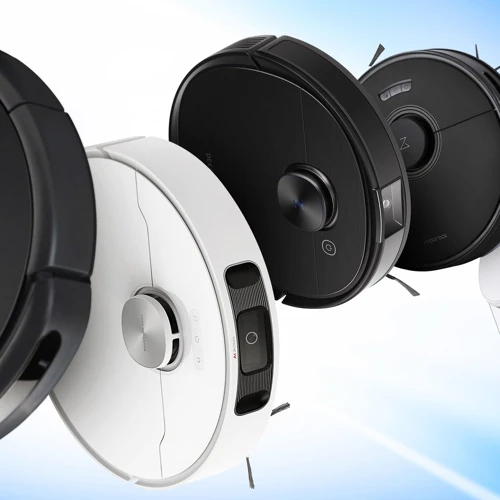
Smart vacuum cleaners have revolutionized the cleaning industry by incorporating mobile application integration. This feature allows for remote control and scheduling of cleaning sessions, reducing energy use and preventing excess cleaning.
Here are some eco-friendly features to look for in a smart vacuum cleaner related to mobile application integration:
- Remote Control: With the help of a mobile application, you can control the vacuum cleaner from anywhere. So if you forgot to turn off the vacuum before leaving home, you can do so remotely without wasting energy.
- Scheduling: The mobile application allows you to schedule cleaning sessions according to your preferences. This feature reduces the need for frequent cleaning and saves energy.
- Efficiency: Some smart vacuum cleaners come with advanced sensors and mapping technology. Mobile application integration enables the vacuum cleaner to map out your home and clean it methodically. This process uses less energy, as the device won’t have to clean the same spots multiple times.
- Notifications: The mobile application sends notifications when the vacuum cleaner finishes its job, so you can turn it off immediately to save energy. It also sends alerts if the vacuum cleaner gets stuck in a certain spot, helping to prevent excessive cleaning.
- Power Management: You can control the power consumption of the vacuum cleaner through the mobile application. This feature optimizes energy use and reduces the device’s carbon footprint.
Mobile application integration is an eco-friendly feature to look out for in a smart vacuum cleaner. It increases the efficiency of the cleaning process, reduces unnecessary cleaning, and optimizes energy use. All these features are great for the environment and can lower the carbon footprint of your household.
Allows for remote control and scheduling of cleaning sessions
Smart vacuum cleaners are a game changer when it comes to cleaning homes efficiently and savoring energy. One of the features that aid in achieving this is the ability to **remotely control and schedule cleaning sessions**, which makes them highly accessible for anyone.
Here are some advantages of this feature in detail:
- Convenience: With this feature, it is possible to control your smart vacuum cleaner remotely and have it clean your home even when you’re not present. This is highly convenient, especially for busy individuals who are always on the go.
- Efficiency: Scheduling cleaning sessions ahead of time can ensure that your home is always kept clean without having to remember to do so manually. This leads to more efficient use of time, energy, and fewer missed cleaning sessions due to forgetting or other circumstances.
- Energy Savings: By scheduling vacuum cleaning sessions to turn on when you’re out of the house, you can save energy and reduce your electricity bill. This function also ensures that your floors are always clean without you having to manually turn on the vacuum cleaner every day.
- Improved Air Quality: Scheduling cleaning sessions at regular intervals ensures that dust, allergens, and other pollutants are removed from your home. This feature ensures that the air quality in your home is improved and can lead to healthier living conditions.
- Customizable: Depending on your preference, you can program your smart vacuum cleaner to clean at specific times, days, and even in specific rooms. This makes the cleaning process highly customizable and more efficient.
In Conclusion, the ability to remotely control and schedule cleaning sessions on a smart vacuum cleaner presents numerous benefits to users, from convenience to energy savings, improved air quality to customize at home cleaning. This is a feature that every eco-conscious consumer should look out for when making a purchase decision.
Reduces energy use and prevents excess cleaning
An eco-friendly smart vacuum cleaner with mobile application integration can reduce energy use and prevent excess cleaning by adjusting cleaning based on room conditions and allowing for remote control and scheduling.
| Features | Advantages |
|---|---|
| Adaptive Cleaning | Adjusts cleaning based on room conditions, reducing unnecessary use of energy and materials |
| Mobile Application Integration | Allows for remote control and scheduling of cleaning sessions, reducing energy use and preventing excess cleaning |
By using sensors to detect dirt and obstacles, an adaptive cleaning system can reduce energy use by avoiding unnecessary cleaning of already clean areas. This feature also helps prevent damage to furniture or floors by avoiding collisions with objects.
Through mobile application integration, the user has the ability to control the cleaning process and schedule it at convenient and appropriate times of the day, reducing energy use during peak hours. This feature also prevents the vacuum cleaner from cleaning more than necessary, preventing excess cleaning that would otherwise waste energy and time.
The combination of adaptive cleaning and mobile application integration work together to create a more efficient cleaning process that reduces energy use and prevents excess cleaning. By utilizing smart technology, this eco-friendly smart vacuum cleaner can provide a superior cleaning experience while also helping to protect the environment.
Battery Life
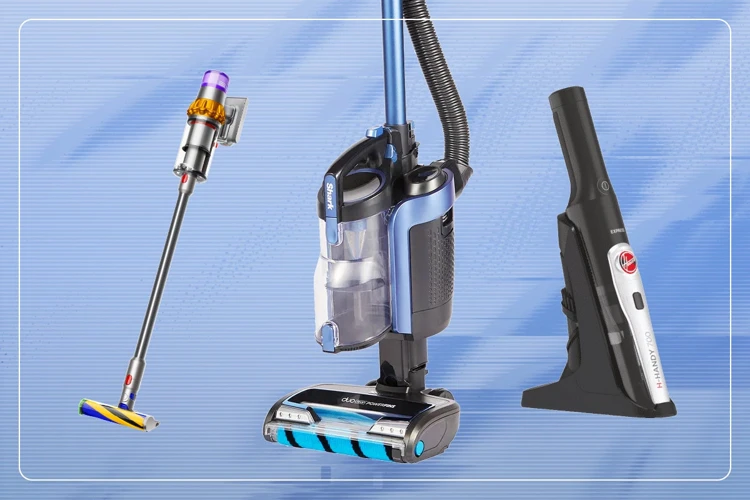
As we continue to seek out eco-friendly features in smart vacuum cleaners, one important aspect to consider is the battery life. Having a high-capacity battery not only reduces the need for frequent charging, but also contributes to a longer lifespan for the device. In this section, we’ll explore the different elements that make up an energy-efficient battery in a smart vacuum cleaner, and how this plays a key role in reducing energy consumption and helping to protect our planet.
High-capacity batteries reduce charging and energy consumption
Battery life is an essential feature to look for in any smart vacuum cleaner. High-capacity batteries can significantly reduce the need for frequent charging, resulting in less energy consumption and cost savings in the long run. Let’s take a closer look at how this feature can benefit you and the environment.
Benefits
- Increased battery storage capacity means a longer run time and reduced need for charging
- Less energy consumption and lower electricity bills
- Better for the environment by reducing the carbon footprint
- Less harmful chemicals are released into the environment during battery production and disposal
- Longer battery lifespan, reducing waste and materials
Comparison
To illustrate the importance of high-capacity batteries, let’s compare two hypothetical smart vacuum cleaners. The first has a 2000mAh battery, while the second has a 5000mAh battery. Using the same amount of energy per minute, the second vacuum cleaner can run for a much longer period before needing to be charged.
- Vacuum Cleaner 1: 2000mAh battery, runs for 60 minutes before needing to be charged.
- Vacuum Cleaner 2: 5000mAh battery, runs for 150 minutes before needing to be charged.
This means that Vacuum Cleaner 2 can clean a larger area in one cleaning cycle, reducing the need for multiple cleaning sessions and saving energy.
Considerations
However, it is important to note that high-capacity batteries can also have downsides. They tend to be bulkier and heavier, resulting in a heavier vacuum cleaner. This can be a disadvantage for those who have difficulty carrying heavy equipment. Additionally, manufacturing high-capacity batteries requires more resources and can lead to more waste.
Conclusion
High-capacity batteries have many benefits when it comes to energy efficiency and environmental sustainability. While they may have some downsides, the positives outweigh the negatives. When looking for a smart vacuum cleaner, it is important to consider the battery life and find a balance between battery capacity and weight.
Longer lifespan and better for the environment
One of the key factors that make eco-friendly smart vacuum cleaners stand out is their longevity and positive impact on the environment. By using high-quality materials and advanced technology, these devices are designed to last longer than traditional vacuum cleaners. This not only reduces the need for frequent replacement but also minimizes waste and materials consumption.
In addition to their longer lifespan, eco-friendly smart vacuum cleaners are also better for the environment. Traditional vacuum cleaners often contribute to landfill waste and pollution due to the materials used in their construction and the chemicals they use for cleaning. Eco-friendly smart vacuum cleaners, on the other hand, are made with recyclable and sustainable materials that reduce their environmental impact.
To further support the environment, these devices are also designed to be energy-efficient and consume less power, reducing their overall carbon footprint. By decreasing energy usage, these vacuum cleaners help to conserve natural resources and reduce greenhouse gas emissions.
These devices often use HEPA filters that effectively capture and remove pollutants from the air without releasing them back into the environment. This is a significant advantage over traditional vacuum cleaners that often contribute to indoor air pollution.
Eco-friendly smart vacuum cleaners offer a multitude of benefits that make them a wise investment for environmentally-conscious individuals. By utilizing long-lasting, sustainable materials and energy-efficient technology, these devices help to reduce waste and promote a healthier environment for future generations.
No Chemicals Used
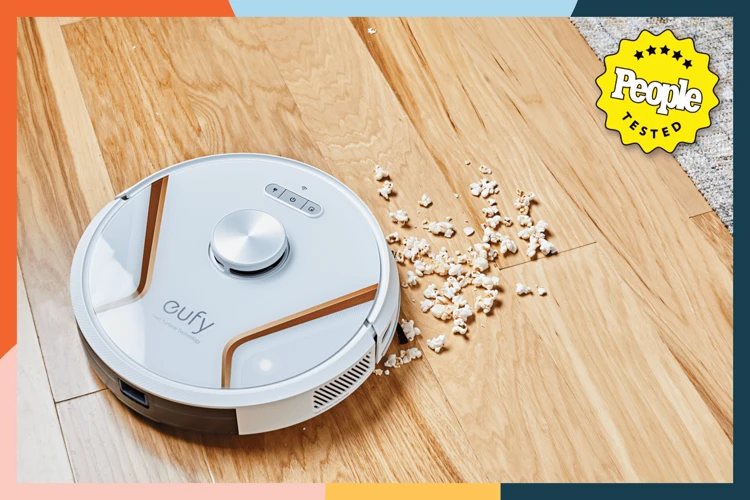
If you’re looking for a way to keep your home clean while also being kind to the environment, then consider using a smart vacuum cleaner with a unique feature that eliminates the need for harsh chemicals. Instead of relying on toxic substances, these eco-friendly devices use innovative cleaning methods that are better for both you and the planet. Here’s a closer look at how smart vacuum cleaners that use no chemicals can help you maintain a clean and healthy home.
Eco-friendly cleaners that don’t require harsh chemicals
When it comes to cleaning your home, it’s important to consider the impact of the products you use on the environment. Smart vacuum cleaners that use eco-friendly cleaners are a great choice for those who want a clean home without the use of harsh chemicals. These cleaners are better for the environment, your health, and the durability of your vacuum cleaner.
Benefits of Eco-Friendly Cleaners
Using eco-friendly cleaners in your smart vacuum cleaner has a number of benefits. First and foremost, eco-friendly cleaners do not contain harsh chemicals that can be harmful to the environment, humans, and pets. This means that you can use your vacuum cleaner without worrying about exposing yourself or your family to toxic chemicals.
Eco-friendly cleaners are often made from plant-based materials that are biodegradable, meaning that they break down easily in the environment. This makes them a more sustainable choice for cleaning your home.
Choosing the Right Eco-Friendly Cleaner
When choosing an eco-friendly cleaner for your smart vacuum cleaner, look for products that are labeled as “green” or “eco-friendly.” These products are usually made from plant-based materials and do not contain harmful chemicals.
You can also make your own eco-friendly cleaner using ingredients that you already have in your kitchen. For example, a mixture of white vinegar and water is a great all-purpose cleaner that can be used in your smart vacuum cleaner.
Eco-Friendly Cleaners vs. Traditional Cleaners
Using eco-friendly cleaners in your smart vacuum cleaner is a great way to reduce your impact on the environment. Traditional cleaners can be harmful to the environment and can contribute to air and water pollution.
Traditional cleaners can be harsh on your vacuum cleaner, causing damage to the internal components over time. Eco-friendly cleaners are gentler on your vacuum cleaner and can help extend its lifespan.
Conclusion
Choosing an eco-friendly cleaner for your smart vacuum cleaner is a great way to reduce your impact on the environment while still keeping your home clean. Look for products that are labeled as “green” or “eco-friendly,” or make your own cleaner using ingredients that you already have at home. With a little effort, you can keep your home clean and green at the same time.
| Benefits of Eco-Friendly Cleaners | Choosing the Right Eco-Friendly Cleaner | Eco-Friendly Cleaners vs. Traditional Cleaners |
|---|---|---|
| Eco-friendly cleaners do not contain harsh chemicals that can be harmful to the environment and human health. | Look for products labeled as “green” or “eco-friendly”. | Traditional cleaners can contribute to pollution and are harsher on your vacuum cleaner. |
| Eco-friendly cleaners are made from biodegradable plant-based materials. | Make your own cleaner using ingredients you already have. | Eco-friendly cleaners extend the lifespan of your vacuum cleaner. |
Eliminates the need to buy, store, and dispose of multiple cleaning agents
Using a smart vacuum cleaner that does not require harsh chemicals is not only good for the environment, but it also eliminates the need to buy, store, and dispose of multiple cleaning agents. This not only saves money but also reduces waste and pollution. In fact, some cleaning agents can be harmful to the environment and even pose a danger to household members.
By investing in a smart vacuum cleaner that uses eco-friendly cleaning agents, you can help minimize the use of harmful chemicals in your home. Not only does this reduce your carbon footprint, but it also helps promote a healthier living environment for everyone in your household. Plus, you won’t have to worry about running out of cleaning agents, which can be a hassle and an added expense.
In the long run, opting for an eco-friendly smart vacuum cleaner with no need for multiple cleaning agents is a wise and responsible choice. Some manufacturers even offer refillable cleaning solution containers, which further reduces waste and promotes sustainability. Check the product specs for information on whether the vacuum cleaner you are considering is compatible with refillable containers.
| Benefits of using eco-friendly cleaners with a smart vacuum cleaner: | Disadvantages of using traditional cleaning agents: |
|---|---|
| Reduces waste and pollution | Pollutes the environment and causes harm to wildlife |
| Promotes a healthier living environment | Can be harmful to human health if used improperly |
| Saves money and reduces the need for multiple cleaning agents | Expensive and can be an added expense for households |
| Refillable cleaning solution containers reduce waste and promote sustainability | Can be a hassle to store and dispose of properly |
Using an eco-friendly smart vacuum cleaner that eliminates the need for multiple cleaning agents offers numerous benefits for the environment, household members, and your wallet. Be sure to consider this feature when shopping for a smart vacuum cleaner that meets your needs and values.
User Manual
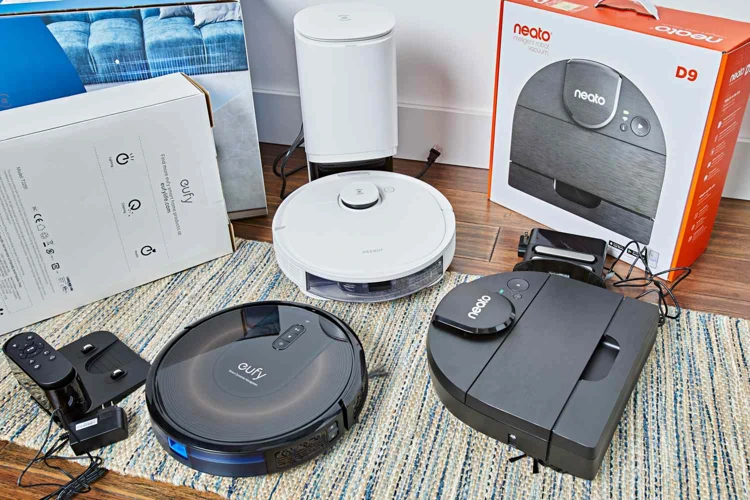
When looking for an eco-friendly smart vacuum cleaner, it’s important to consider not just the device itself, but all aspects of its use. And while many people might overlook it, the user manual is actually a crucial part of the equation. An easy-to-understand and comprehensive user manual can not only help you get the most out of your vacuum, but can also reduce the need for customer support and product replacement. Plus, a good user manual can help reduce waste, materials, and energy consumption. Here’s what to look for in a user manual when choosing an eco-friendly smart vacuum cleaner:
Easy-to-understand instructions reduce the need for customer support and product replacement
When it comes to buying a smart vacuum cleaner, it’s important to remember that not all devices are created equal. One crucial aspect to consider is the ease with which the user manual can be understood. Clear and concise instructions can go a long way in reducing the need for customer support and potential product replacement.
To ensure that the user manual is easy to understand, many manufacturers strive to utilize simple language without any technical jargon. Additionally, the use of visual aids (such as images, diagrams, and videos) can greatly improve the user-friendliness of the instructions.
Another way to enhance the comprehension of the user manual is to create a step-by-step guide that’s easy to follow. The guide should provide detailed instructions for every part of the vacuum cleaner, from assembly and charging to regular maintenance and troubleshooting. Breaking down the manual into sections or using a bulleted list can also help make it easier to digest.
By providing a comprehensive and easily understood user manual, manufacturers increase the usability of their smart vacuum cleaner products. They also decrease the likelihood of user misunderstandings or errors, which can ultimately lead to a reduction in the need for customer support, replacement products, and wasted materials. It’s a win-win situation for both the customers and the environment.
Reduces waste, materials, and energy consumption
When searching for an eco-friendly smart vacuum cleaner, it’s important to consider how the product reduces waste, materials, and energy consumption. By choosing a vacuum cleaner that prioritizes sustainability, you can help reduce the negative impact that traditional cleaning products have on the environment.
Here are some ways that an eco-friendly smart vacuum cleaner can help reduce waste and energy consumption:
- Using energy-efficient technology to reduce power consumption and save energy costs over time.
- Using recycled and eco-friendly materials in the construction of the product to reduce waste produced during the manufacturing process.
- Incorporating a HEPA filter that is longer-lasting and reusable, reducing the need to constantly purchase and dispose of traditional filters.
- Adaptive cleaning technology that adjusts its cleaning patterns based on the conditions of the room, reducing unnecessary cleaning and energy consumption.
- Built-in mobile application that allows you to control and schedule cleaning sessions, preventing excess cleaning and energy use.
- No harsh chemicals used, eliminating the need to buy, store, and dispose of multiple cleaning agents.
- Durable construction that reduces the need for frequent replacements and further reduces waste.
By choosing a smart vacuum cleaner with these eco-friendly features, you can help contribute to a cleaner and more sustainable future. Not only will you be doing your part to reduce waste and energy consumption, but you’ll also enjoy a cleaner home with fewer harmful chemicals. So, take the time to look for a smart vacuum cleaner with these features and invest in a more sustainable cleaning solution today.
Product Durability
When investing in a smart vacuum cleaner, it’s important to choose one that not only meets your cleaning needs but also lasts long. A durable vacuum cleaner not only saves you money in the long run but also reduces waste and materials consumption. When a vacuum cleaner is well-built and sturdy, it can withstand years of use and reduce the need for frequent replacements. So, let’s take a closer look at some of the key features that contribute to the durability of a smart vacuum cleaner.
Longer lifespan and fewer replacements
One of the important eco-friendly features to look for in a smart vacuum cleaner is a longer lifespan and fewer replacements. This not only reduces waste and materials, but it also saves energy and resources. Here are some ways that smart vacuum cleaners achieve this:
- Durable Design: Smart vacuum cleaners are built to last with high-quality materials that withstand wear and tear over time. With better construction and efficient design, they are less likely to need replacement parts or repairs.
- Efficient Performance: Smart vacuum cleaners have advanced motors and suction technology that ensure efficient performance with each use. This prevents the need for excessive cleaning, which can cause wear and tear on the machine, reducing the frequency of replacements.
- Regular Maintenance: Smart vacuum cleaners come with easy-to-follow user manuals that provide instructions on how to properly maintain and clean the machine. By following the manufacturer’s recommended maintenance schedule, the user can prolong the lifespan of their vacuum cleaner.
- Warranty: Many smart vacuum cleaners come with a warranty that covers repairs and replacements for a certain period of time. This can provide peace of mind to the user and help them save money on replacements.
By choosing a smart vacuum cleaner with a longer lifespan and fewer replacements, you can help reduce waste, save energy and resources, and ensure that your cleaning needs are met without constantly replacing your machine.
Reduces waste and materials
When choosing an eco-friendly smart vacuum cleaner, it’s important to consider how it reduces waste and materials. This is not only better for the environment, but it can also save you money in the long run. Let’s take a closer look at how specific features can help reduce waste and materials:
| Feature | How it Reduces Waste and Materials |
|---|---|
| HEPA Filters | HEPA filters are reusable and have a longer lifespan than traditional filters, which reduces waste and the need for constant replacements. |
| Recyclable Materials | Using eco-friendly and recycled materials in construction reduces the amount of waste that goes into landfills. |
| Multi-Purpose Cleaning | A smart vacuum cleaner that is capable of cleaning multiple surfaces eliminates the need for separate cleaning tools, reducing the amount of materials needed. |
| User Manual | An easy-to-understand user manual reduces the need for customer support and product replacement, which in turn reduces waste and materials. |
| Product Durability | A smart vacuum cleaner with a longer lifespan reduces the need for frequent replacements, which ultimately reduces the amount of waste produced. |
By choosing a smart vacuum cleaner with these eco-friendly features, you can reduce your impact on the environment and minimize waste and materials. It’s important to consider these features when making your purchasing decision, as they can have a big impact on the long-term sustainability of your cleaning routine.
Conclusion
In conclusion, when it comes to choosing a smart vacuum cleaner, there are several eco-friendly features you should look out for. By selecting a vacuum cleaner with these attributes, you can minimize the impact of your cleaning routine on the environment, reduce your energy consumption, and also save money in the long run.
Energy efficiency is critical to consider, as it can help you save money on your household energy bills. A smart vacuum cleaner that incorporates energy-saving technology and utilizes low power consumption is a smart choice. Look for models with the Energy Star rating system to ensure they meet the highest energy-efficiency standards.
HEPA filters are also an essential eco-friendly feature to consider. They remove pollutants and allergens from the air, providing a healthier breathing environment. These filters have a longer lifespan and are reusable, and are better for the environment than traditional filters.
Recyclable materials are crucial to reduce your environmental impact. Choose a vacuum cleaner constructed with recycled and eco-friendly materials to minimize waste production.
Smart navigation is another key feature that can help reduce energy usage. Efficient cleaning patterns ensure that only dirty areas are cleaned, which can save you energy and time.
Noise reduction is also vital, as it can prevent disturbances both for you and the environment. Choose a vacuum cleaner that operates more quietly and produces less noise.
Multi-purpose cleaning is an essential feature, as it reduces the need for additional cleaning tools, reducing waste, materials, and energy consumption.
Adaptive cleaning is another eco-friendly feature that adjusts cleaning depending on room conditions, which can help reduce unnecessary energy and materials consumption.
Mobile application integration allows you to control and schedule cleaning sessions remotely, reducing energy use and preventing excess cleaning.
Battery life is another aspect to consider since high-capacity batteries reduce charging and energy consumption, resulting in a longer lifespan and a better environmental impact.
No chemicals used is vital for eliminating the need to buy, store and dispose of multiple cleaning agents, reducing cost, materials, and energy consumption.
User manual is also necessary for reducing the need for customer support and product replacement, which reduces waste, materials, and energy consumption.
Product durability is essential, as it leads to a longer lifespan and fewer replacements, thus reducing waste and materials.
In conclusion, by selecting a smart vacuum cleaner with eco-friendly features like energy efficiency, HEPA filters, recyclable materials, smart navigation, noise reduction, multi-purpose cleaning, adaptive cleaning, mobile application integration, long battery life, no use of chemicals, user manual, and product durability, you can have a vacuum cleaner that meets your needs while having a minimal environmental impact.
Frequently Asked Questions
Can smart vacuum cleaners really help reduce energy consumption?
Yes! Smart vacuum cleaners with energy-saving technology and efficient cleaning patterns can help reduce overall energy consumption and lower your electricity bill.
What is a HEPA filter and why is it important in a smart vacuum cleaner?
A HEPA filter is a high-efficiency particulate air filter that can trap particles as small as 0.3 microns. This is important for reducing pollutants and allergens in your home and improving air quality.
How do recyclable materials benefit the environment in a smart vacuum cleaner?
Recyclable materials in a smart vacuum cleaner help reduce waste production and minimize the impact on the environment, making it a more sustainable option for cleaning your home.
What is the benefit of smart navigation in a vacuum cleaner?
Smart navigation allows for more efficient cleaning patterns, reducing overall energy usage and preventing unnecessary cleaning of already clean areas, ultimately saving you time and money.
Do noise reduction features in smart vacuum cleaners have an impact on the environment?
Yes! Quieter operation means less noise pollution for your household and surrounding environment. It also typically means that the vacuum cleaner is designed with more energy-efficient motors, contributing to a greener cleaning solution.
Can a multi-purpose cleaning feature really eliminate the need for additional cleaning tools?
Yes! Many smart vacuum cleaners are designed to clean a wide range of surfaces with one device, eliminating the need to buy and store multiple cleaning tools and ultimately reducing waste production.
How does adaptive cleaning in smart vacuum cleaners help reduce energy and material consumption?
Adaptive cleaning allows the vacuum cleaner to adjust its cleaning approach based on the specific conditions in each room or area, reducing the need for excessive energy and materials use and saving you money in the long run.
Can controlling a smart vacuum cleaner through a mobile application really make a difference in energy usage?
Yes! Being able to remotely control and schedule cleaning sessions through a mobile app can help you more efficiently manage your vacuuming needs and prevent unnecessary cleaning, ultimately saving both time and energy.
What is the benefit of eco-friendly cleaners that don’t require harsh chemicals?
Eco-friendly cleaners not only eliminate the need to buy, store, and dispose of multiple cleaning agents, but they are also better for your health and for the environment.
How does a user manual contribute to reduced waste and energy consumption?
Having an easy-to-understand user manual reduces the need for customer support calls and can help prevent product replacement due to user error, ultimately reducing waste production and energy consumption associated with manufacturing and shipping new products.
